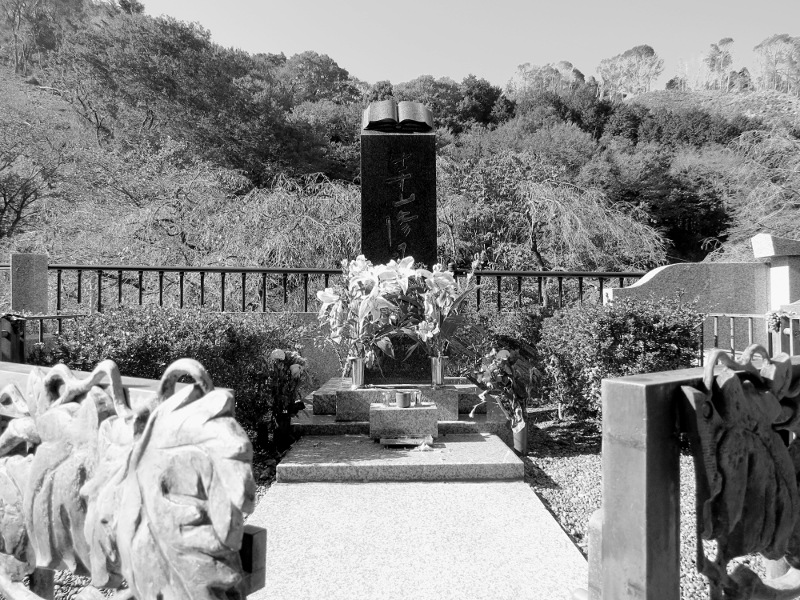|
Shūji Terayama
was a Japanese avant-garde poet, dramatist, writer, film director, and photographer. His works range from radio drama, experimental television, underground (''Angura'') theatre, countercultural essays, to Japanese New Wave and "expanded" cinema. Many critics view him as one of the most productive and provocative creative artists to come out of Japan. He has been cited as an influence on various Japanese filmmakers from the 1970s onward. Life Terayama was born December 10, 1935, in Hirosaki, Aomori, the only son of Hachiro and Hatsu Terayama. When Terayama was nine, his mother moved to Kyūshū to work at an American military base, while he himself went to live with relatives in the city of Misawa, also in Aomori. Terayama lived through the Aomori air raids that killed more than 30,000 people. His father died at the end of the Pacific War in Indonesia in September 1945. Terayama entered Aomori High School in 1951 and, in 1954, he enrolled in Waseda University's Faculty of Edu ... [...More Info...] [...Related Items...] OR: [Wikipedia] [Google] [Baidu] |
Hirosaki
is a city located in western Aomori Prefecture, Japan. On 1 April 2020, the city had an estimated population of 168,739 in 71,716 households, and a population density of . The total area of the city is . Hirosaki developed as a castle town for the 100,000 '' koku'' Hirosaki Domain ruled by the Tsugaru clan. The city is currently a regional commercial center, and the largest producer of apples in Japan. The city government has been promoting the slogans "Apple Colored Town Hirosaki" and "Castle and Cherry Blossom and Apple Town" to promote the city image. The town is also noted for many western-style buildings dating from the Meiji period. Geography Hirosaki is located in western Aomori Prefecture, at the southern end of the Tsugaru plains of the Tsugaru Peninsula, southeast of Mount Iwaki and bordering on Akita Prefecture. The eastern and southern flanks of Mount Iwaki and its peak are within the city's borders. The Iwaki River flows from the west to the northeast through ... [...More Info...] [...Related Items...] OR: [Wikipedia] [Google] [Baidu] |
Children Of Paradise
''Children of Paradise'' (original French title: ''Les Enfants du Paradis'') is a two-part French romantic drama film by Marcel Carné, produced under war conditions in 1943, 1944, and early 1945 in both Vichy France and Occupied France. Set in the theatrical world of 1830s Paris, it tells the story of a courtesan and four men — a mime, an actor, a criminal and an aristocrat — who love her in entirely different ways. It has received universal critical acclaim. "I would give up all my films to have ''Les Enfants du Paradis''", said ''nouvelle vague'' director François Truffaut. In Truman Capote's ''The Duke in His Domain'' (1957), actor Marlon Brando called it "maybe the best movie ever made." Its original American trailer positioned it as the French answer to ''Gone With the Wind'' (1939), an opinion shared by critic David Shipman. A 1995 vote by 600 French critics and professionals named it the "Best Film Ever". Title As noted by one critic, "in French, 'paradis' is t ... [...More Info...] [...Related Items...] OR: [Wikipedia] [Google] [Baidu] |
The Crimson Thread Of Abandon
''The Crimson Thread of Abandon'' is a collection of short fiction by Shūji Terayama, translated into English by Elizabeth L. Armstrong and published by the University of Hawai'i Press in 2013. " . Retrieved on May 29, 2015. The book contains a total of 20 stories.Barbush, Madeline. The Crimson Thread of Abandon: Stories " '' |
Throw Away Your Books, Rally In The Streets
is a 1971 Japanese feature-length experimental drama film directed by Shūji Terayama. A metaphor for Japan's descent into materialism, it follows a young man's disillusionment with the world around him and his determination to achieve something in life while his family members are content with their poor social and economic standing. It was Terayama's first feature-length film. Reception The film won the grand prize at the San Remo Film Festival, and was voted the ninth best Japanese film of 1971 in the Kinema Junpo , commonly called , is Japan's oldest film magazine and began publication in July 1919. It was first published three times a month, using the Japanese ''Jun'' (旬) system of dividing months into three parts, but the postwar ''Kinema Junpō'' ... poll of film critics. References External links * * 1970s Japanese-language films 1971 films Japanese avant-garde and experimental films Films directed by Shūji Terayama 1970s Japanese films {{experime ... [...More Info...] [...Related Items...] OR: [Wikipedia] [Google] [Baidu] |
Tate Modern
Tate Modern is an art gallery located in London. It houses the United Kingdom's national collection of international modern and contemporary art, and forms part of the Tate group together with Tate Britain, Tate Liverpool and Tate St Ives. It is located in the former Bankside Power Station, in the Bankside area of the London Borough of Southwark. Tate Modern is one of the largest museums of modern and contemporary art in the world. As with the UK's other national galleries and museums, there is no admission charge for access to the collection displays, which take up the majority of the gallery space, whereas tickets must be purchased for the major temporary exhibitions. Due to the COVID-19 pandemic the museum was closed for 173 days in 2020, and attendance plunged by 77 per cent to 1,432,991 in 2020. Nonetheless, the Tate was third in the list of most-visited art museums in the world in 2020, and the most visited in Britain. The nearest railway and London Underground stati ... [...More Info...] [...Related Items...] OR: [Wikipedia] [Google] [Baidu] |




.png)